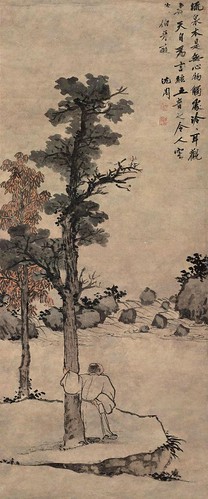The Wu school of painting (吳門畫派) refers to a group of Chinese painters of the Ming dynasty active in the second half of the 15th and first half of the 16th centuries. They were scholar-artists who, in their “literati painting” (wenrenhua, 文人畫), perpetuated the personally expressive styles and attitudes of former artists such as the Four Masters of the Yuan dynasty, in contrast to their contemporaries of the Zhe school, who perpetuated more conservative styles.
The Wu school was named after Wu county (吳縣) in the region of Suzhou (蘇州), in Jiangsu province, where the painters worked. Among the artists included in the group are Shen Zhou (沈周) and his student Wen Zhengming (文徵明). Generally, their paintings are quite subtle, but that subtlety veils great variety and imagination—Wu school works are characterized by a sure, light brushstroke used to define painterly and structural complexity, learned allusions and poetic inscriptions, and very thin, delicate coloring. These artists created paintings more for their own and their peers’ intellectual amusement than for a larger public. Some well-known painters, such as Tang Yin (唐寅) and Qiu Ying (仇英), lived in the area and knew the famous members of the Wu school, but they cannot easily be grouped with them because of their sometimes differing styles and interests.

